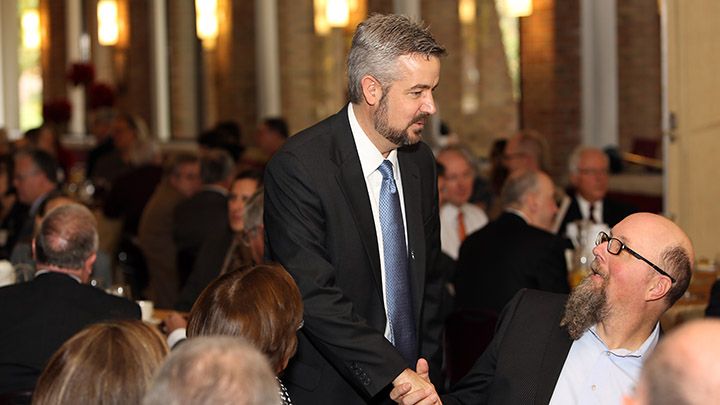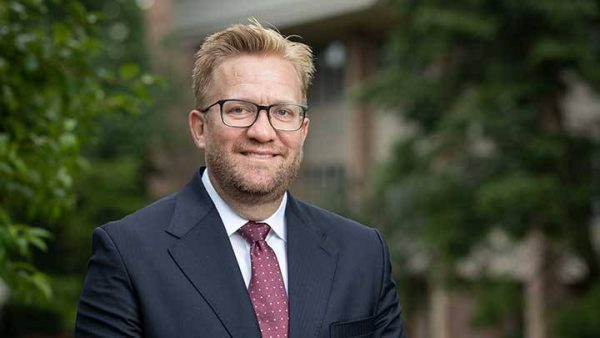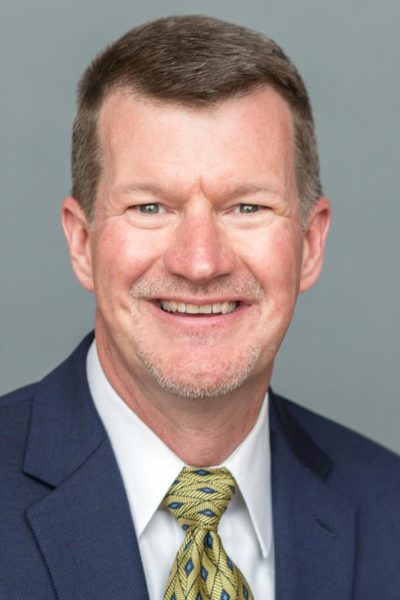Amid unspecified budget cuts, Le Roy states strong financial condition
In response to rumors about budget cuts around the college, President Le Roy stated that Calvin is in a “strong financial condition” despite constrained budgets resulting from declining enrollment. This address came in an email statement released to the Calvin community on Tuesday afternoon.
The president’s statement came prompted by strong reactions from the Calvin community concerning the fate of the Student Activities Office (SAO) and the position held by its director Ken Heffner, which Chimes reported on last week.
Speaking about the financial situation, Le Roy stated, “Our debt is shrinking, our endowment assets are growing, giving is strong, and we are living within our means… Calvin continues to have a strong balance sheet as indicated by steady improvement in net assets in this decade.”
He encouraged those interested to download the financial statement which is posted online each year.
In the statement, Le Roy mentioned that VP for student life Sarah Visser, who has been out of the country since last week, would have more to say regarding the future of the SAO when she returns. The community is invited to a town hall meeting with Visser and Le Roy to be hosted Tuesday, April 9 at 7 p.m. in the chapel sanctuary, during which more direction will be clarified.
Senior Devan Alexander told Chimes, “I think most people understand that budget cuts have to be made, but the problem we have is with what the college is cutting. The college is prioritizing rebranding as a university and building a new commons union over [programs] like SAO… students are demonstrating on social media that they prefer SAO.”
Regarding the SAO, “discussions about the future organization and staffing of this important program are still ongoing [and] each vice president is taking responsibility for the leadership to make changes that align with our current resources,” stated Matt Kucinski, assistant director of media relations, in an email to Chimes.
However, budget cuts will likely go beyond the SAO. Although leaders across many departments of the college are “thinking hard and well about how best to organize the college to continue to support the growth and development of our students and to keep their education affordable,” Kucinski declined to comment on which aspects or positions in the college would be lost until decisions were finalized.
Despite the desire to keep education affordable, the Calvin website has indicated that tuition continues to rise, now at $36,100 for full-time studies in 2019-20, up $1,500 from the 2018-19 school year. In addition, a new “wellness fee” of $200 will also be added next year, according to the website. However, college tuition has been on the rise across the US for the past couple of decades. According to the Chronicle of Higher Education, the average published tuition for four-year private nonprofit institutions, from 1997-98 to 2017-18, has gone up 65.3 percent. Additionally, the costs at four-year public institutions have risen faster than private ones, but students at private nonprofit colleges still pay more tuition on average.
Kucinski added that the college has reduced several positions that became vacant during the year, but that this would not be possible for every instance. Additionally, the vice presidents are currently and carefully reviewing every staff position, according to Kucinski.
“What additional cuts will need to be made will depend on how 2019-20 enrollment numbers shape out later this spring and also on how the VPs have chosen to reorganize their areas,” Kucinski wrote. “What I will say is the provost and vice presidents are compassionate people of deep integrity, capable of debating alternatives, finding solutions, and integrating a sincere Christian faith with the work of administration.”
Asked about a lack of communication between decision-makers and the rest of the community, Kucinski wrote, “Wherever possible, the vice presidents have sought to include staff in this problem-solving process. We do not discuss personnel matters in public meetings.”
Le Roy’s statement cited two main factors for budget constraints: “the decline in the number of high school graduates in our primary region and state; and our lack of diversification when it comes to revenue streams and in the types of students we serve.”
Le Roy recommended the WICHE website for statistics on declines in the high school graduating populations in the Midwest and Northeastern regions of the country. According to the statistics, by 2030 Michigan’s high school graduating population will be 28.8 percent lower than it was in 2008. Such data led Calvin to prioritize exploring new ways to grow enrollment outside of their usual demographics, “to reach students in new regions and build on an emerging strength in international recruitment in the decade to come,” as well as “expand our program offerings to populations and age groups of students we have not traditionally served.”
“In addition to demographic realities, we need to remember that federal and state support for higher education continues to shrink, while technology, science equipment, library resources, health care costs, and other expenses all continue to grow,” said Le Roy in his statement. “Until our overall revenues grow again, our budgets will be constrained, and we will continue to face painful choices.”












